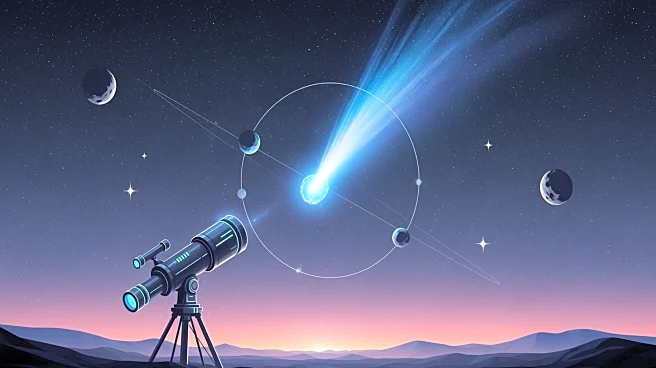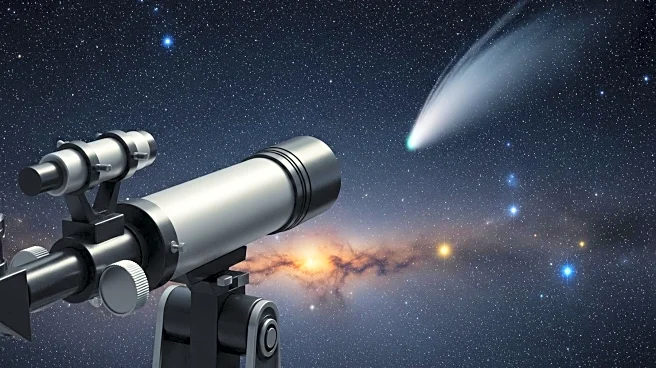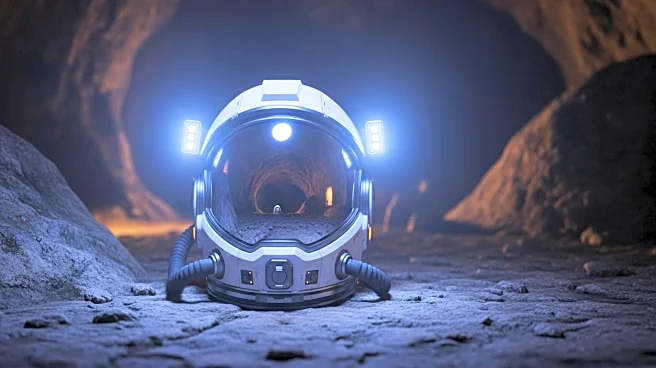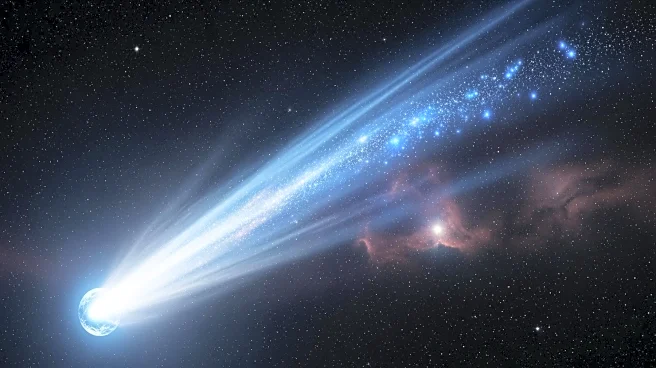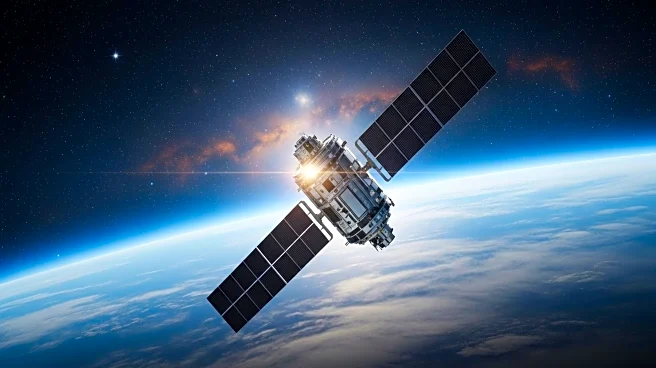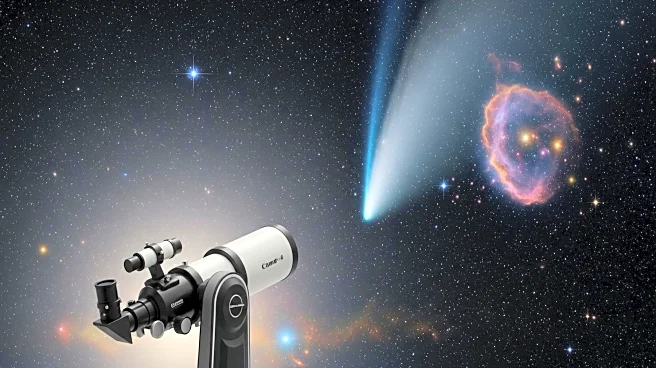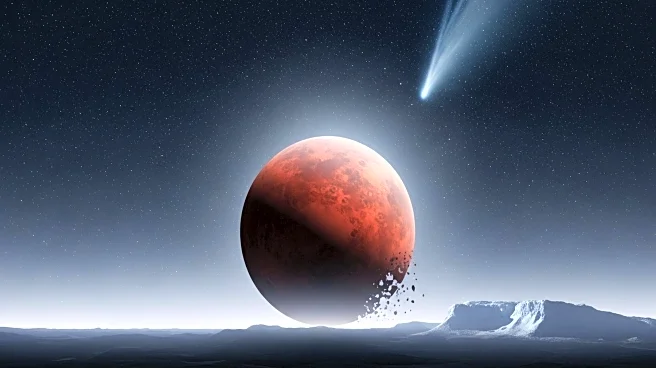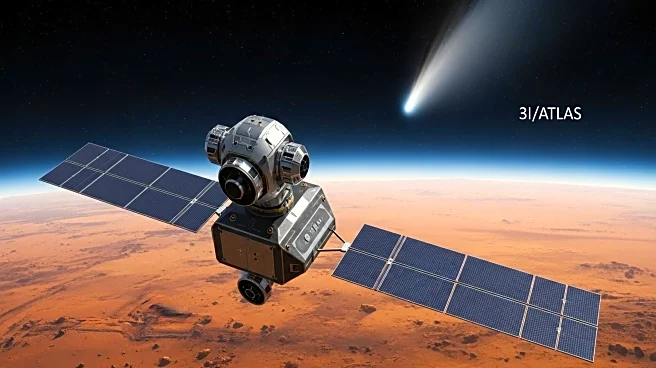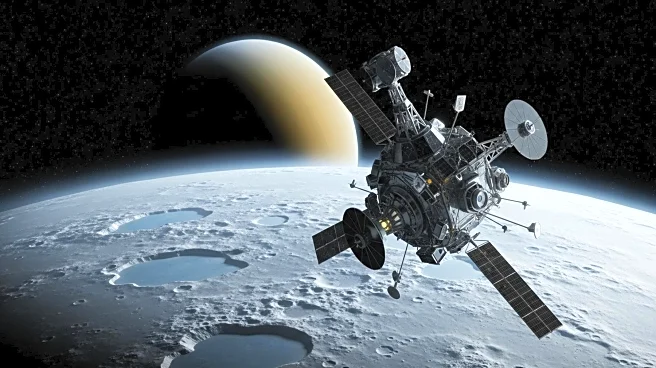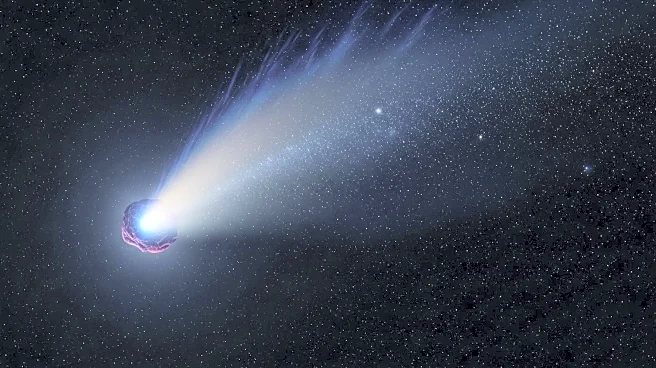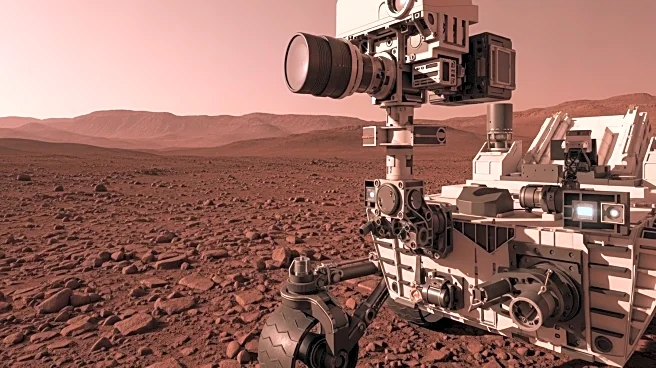What's Happening?
Astronomers have detected water vapor in the interstellar comet 3I/ATLAS, marking a significant discovery in understanding the chemistry of distant star systems. The European Space Agency's ExoMars Trace
Gas Orbiter observed the comet as it passed close to Mars, revealing substantial water outgassing at a distance from the Sun where direct surface ice sublimation is unexpected. This activity is attributed to the release of small, ice-coated dust grains. The detection was made using NASA's Neil Gehrels Swift Observatory, which identified the faint ultraviolet glow of hydroxyl, a byproduct of water molecules dissociated by sunlight. This discovery allows scientists to compare 3I/ATLAS to comets from our solar system and other interstellar objects, enhancing understanding of exoplanetary system chemistry.
Why It's Important?
The detection of water vapor in 3I/ATLAS provides crucial data for comparing interstellar comets to those within our solar system, offering insights into the formation and chemistry of planetary systems beyond our own. This discovery challenges existing theories about comet activity and sublimation processes, suggesting that interstellar comets may have unique mechanisms for releasing water vapor. Understanding these processes can inform models of star system formation and the potential for life-supporting conditions elsewhere in the universe. The presence of water, a key ingredient for life, in interstellar comets underscores the universality of life's building blocks across the cosmos.
What's Next?
Scientists will continue to study 3I/ATLAS to gather more data on its composition and behavior, comparing it to other interstellar visitors like 'Oumuamua and Borisov. Observations from Mars orbiters and other space-based telescopes will provide additional insights into the comet's activity and structure. These studies may lead to revisions in theories about comet formation and the conditions necessary for water vapor release. The ongoing research will contribute to a broader understanding of the diversity and complexity of interstellar objects, potentially influencing future missions aimed at exploring distant star systems.
Beyond the Headlines
The discovery of water vapor in 3I/ATLAS highlights the potential for interstellar comets to carry clues about the formation of worlds far beyond our own. This finding suggests that the ingredients for life's chemistry are not unique to our solar system, raising questions about the prevalence of life-supporting conditions in the universe. The study of interstellar comets may also reveal new information about the processes that govern the evolution of star systems, offering a glimpse into the dynamic and interconnected nature of the cosmos.
